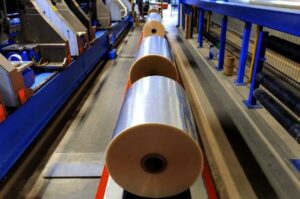China has long been recognized as a leader in the manufacturing industry, producing a wide range of products that are sold and used all over the world. Among these products, China has become a major supplier of BOPP (biaxially-oriented polypropylene) film, a type of plastic film that is widely used in packaging, labeling, and printing applications.

BOPP film is a type of polypropylene film that is made by stretching the plastic in two directions (biaxially) to create a material that is strong, durable, and resistant to moisture and other environmental factors. This type of film is widely used in a variety of applications, including food packaging, tape, labels, and wrapping.
China is one of the largest producers of BOPP film in the world, with a number of manufacturers producing high-quality films that are used in a range of applications. Some of the leading manufacturers of BOPP films in China include Kingchuan, FuRong, Xinjinlei, and Shantou Wanshun.
One of the key advantages of BOPP film is its versatility. This type of film can be produced in a variety of thicknesses, widths, and finishes, making it ideal for a range of applications. BOPP film can be clear, colored, or printed, and it can be coated with various types of adhesives to make it suitable for use in tape, labels, and other applications.
Another advantage of BOPP film is its strength and durability. BOPP film is resistant to tearing and puncturing, making it ideal for use in applications where the contents of the package need to be protected from damage during transport or handling. Additionally, BOPP film is resistant to moisture, which makes it ideal for use in food packaging and other applications where moisture could be a problem.
In addition to its strength and durability, BOPP film is also lightweight and easy to handle. This makes it ideal for use in applications where weight and handling are important factors, such as in the packaging of consumer goods.
China’s BOPP film industry has been growing rapidly in recent years, driven by increasing demand for high-quality packaging materials. The country’s manufacturers have invested heavily in research and development, as well as in new production facilities, in order to meet this growing demand.
One of the key factors driving the growth of the BOPP film industry in China is the country’s large and growing consumer market. As the country’s middle class has grown and become more affluent, demand for consumer goods has increased, driving demand for packaging materials.
In addition to domestic demand, China’s BOPP film manufacturers also export their products to countries all over the world. The country’s manufacturers have developed a reputation for producing high-quality films at competitive prices, making them a popular choice for companies around the world.
However, as with any industry, China’s BOPP film industry faces a number of challenges. One of the key challenges is competition from other countries, particularly in Southeast Asia. Countries like Thailand, Indonesia, and Vietnam have been investing heavily in their own BOPP film industries, and are beginning to compete with China on quality and price.
Another challenge facing China’s BOPP film industry is the increasing focus on sustainability and environmental responsibility. As consumers around the world become more aware of the environmental impact of plastics and other materials, demand for sustainable packaging solutions is increasing. This has led to increased interest in alternative materials, such as bioplastics and paper-based packaging solutions.
Despite these challenges, however, China’s BOPP film industry is poised for continued growth in the coming years. The country’s manufacturers have shown a commitment to innovation and quality, and have invested heavily in research and development to ensure that they remain competitive in the global market.
For more details check this out – China BOPP film manufacturers






